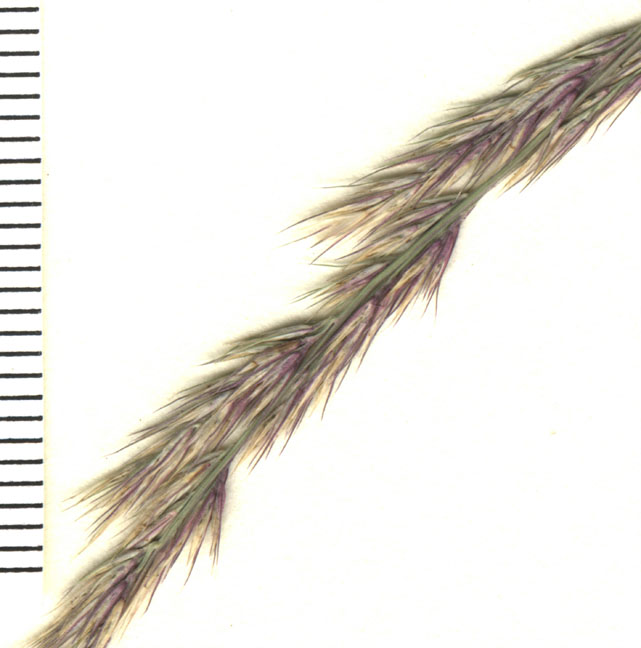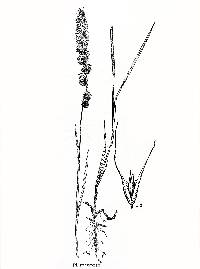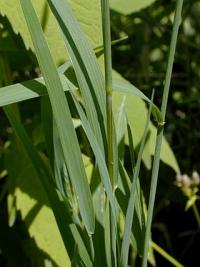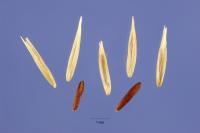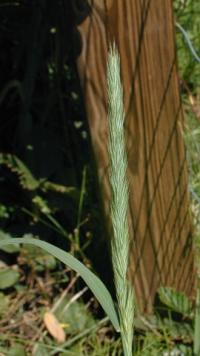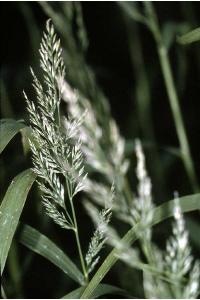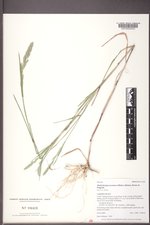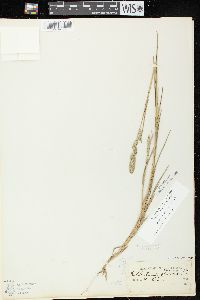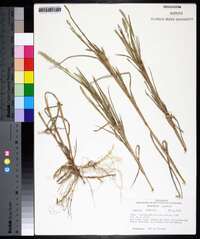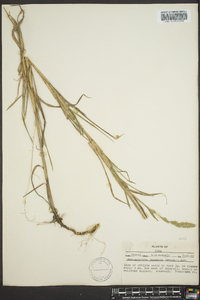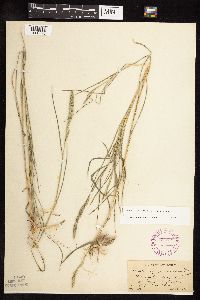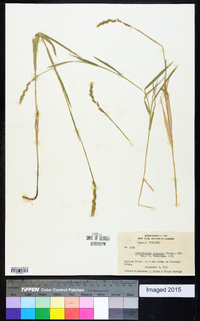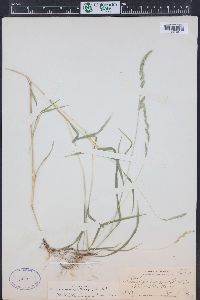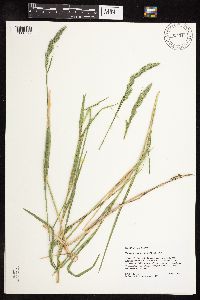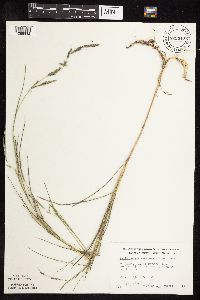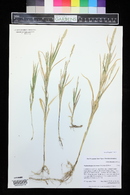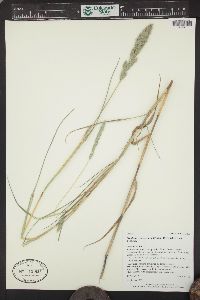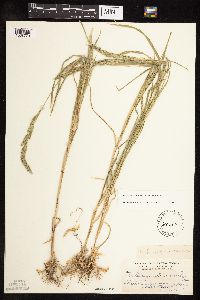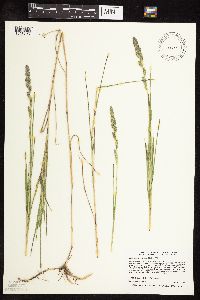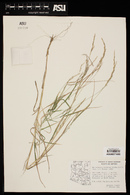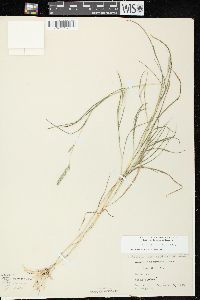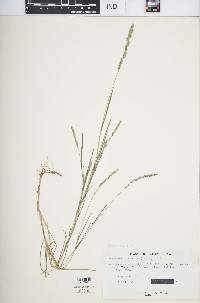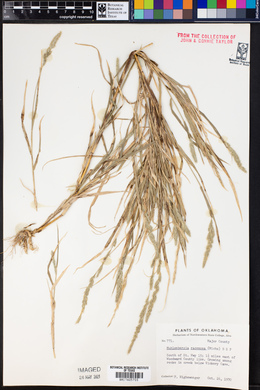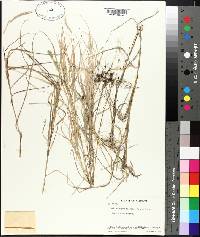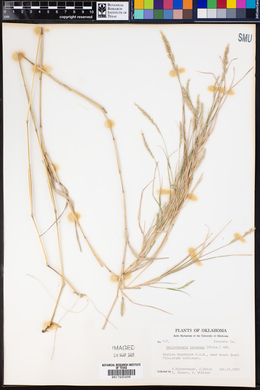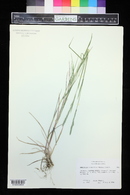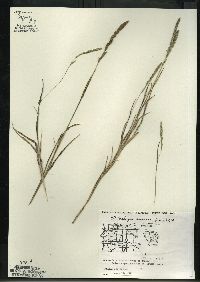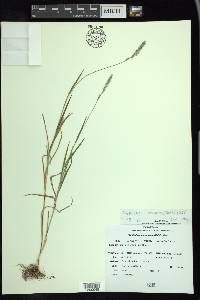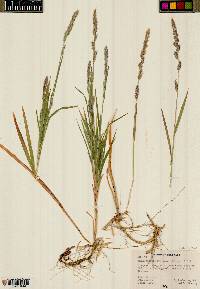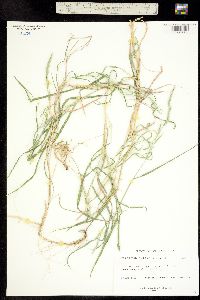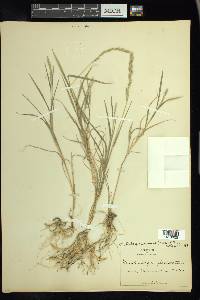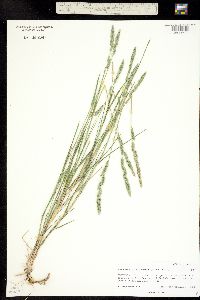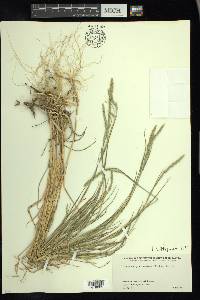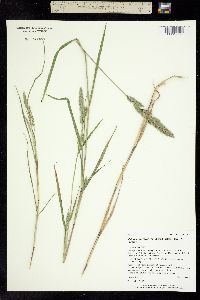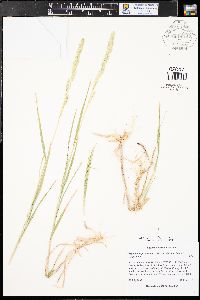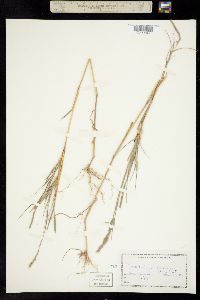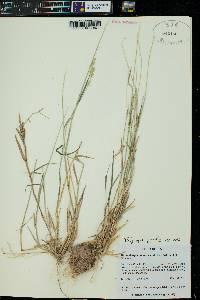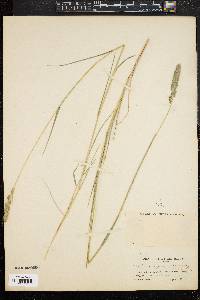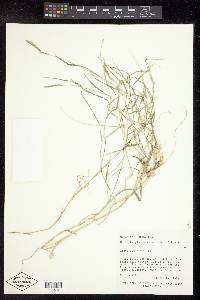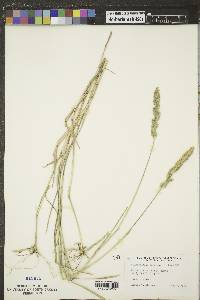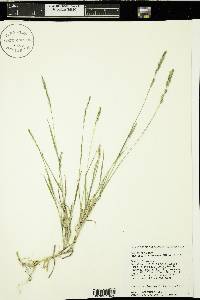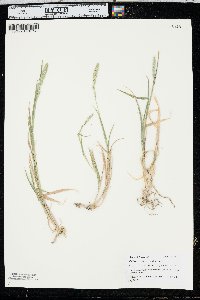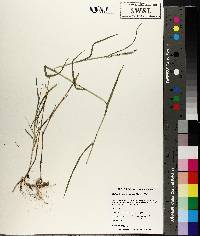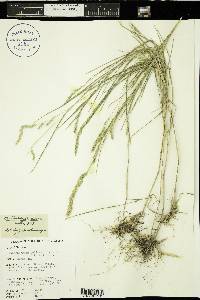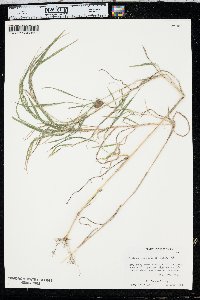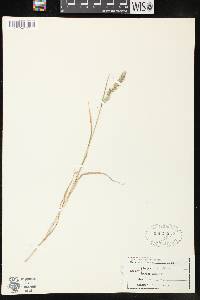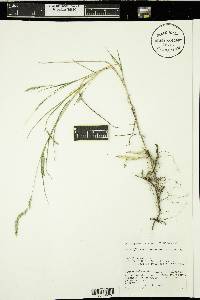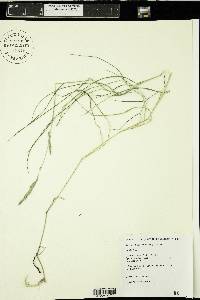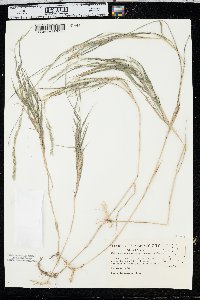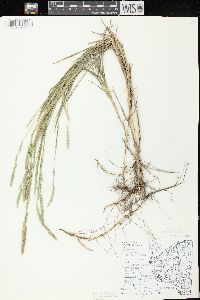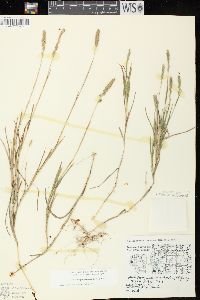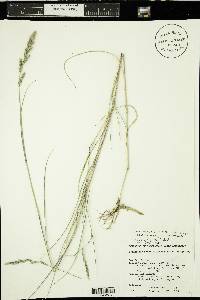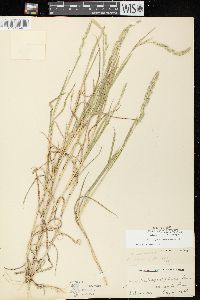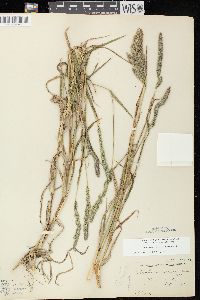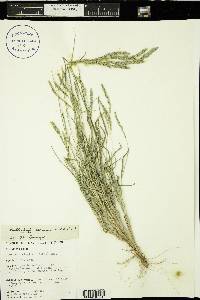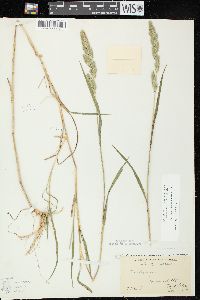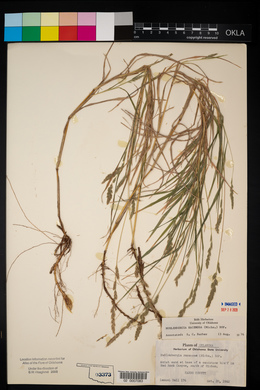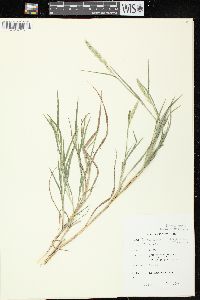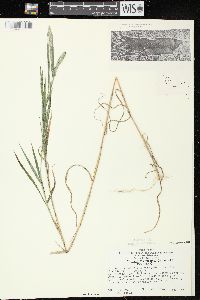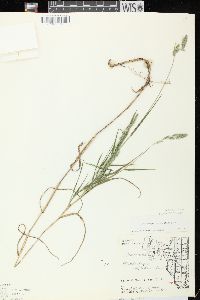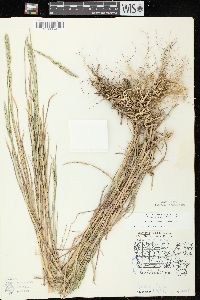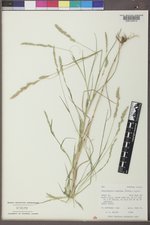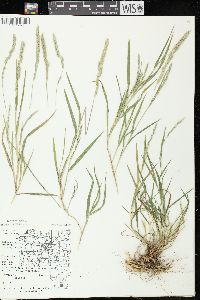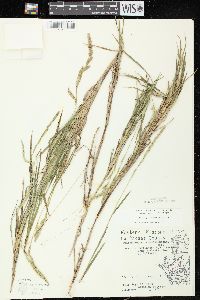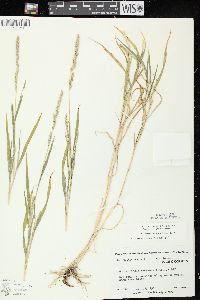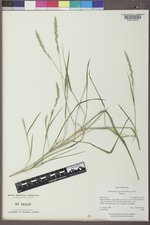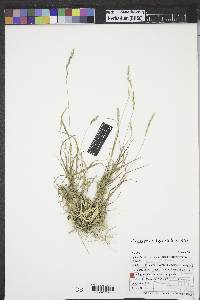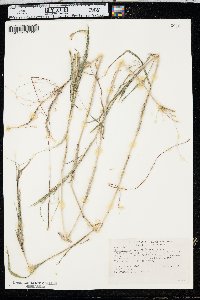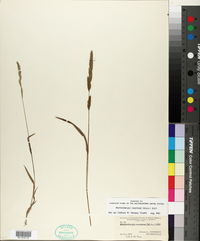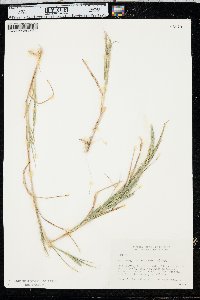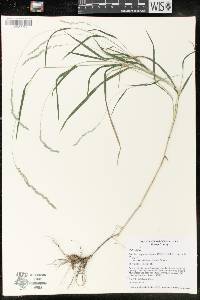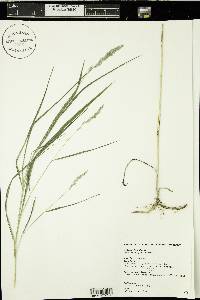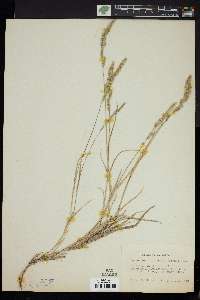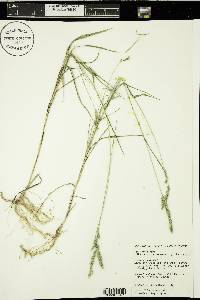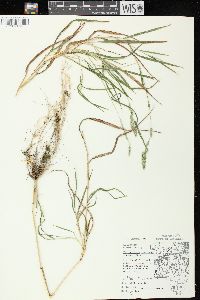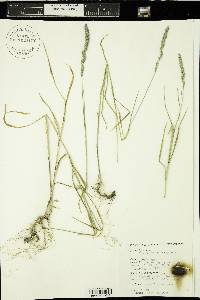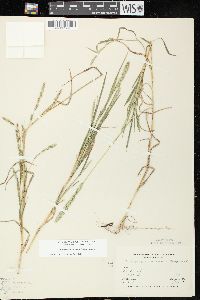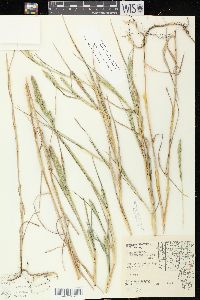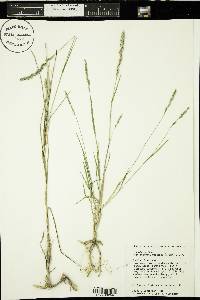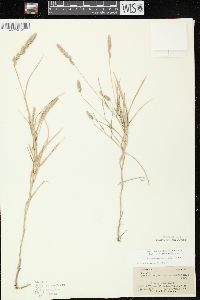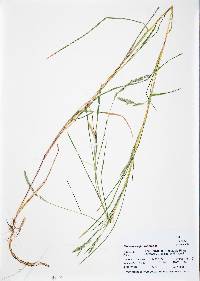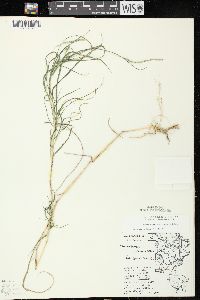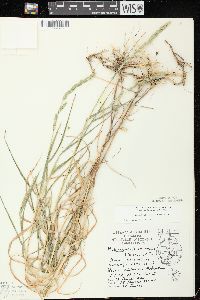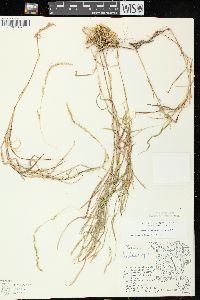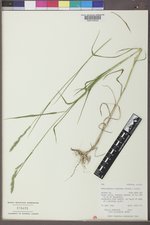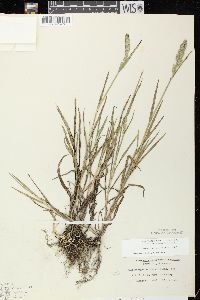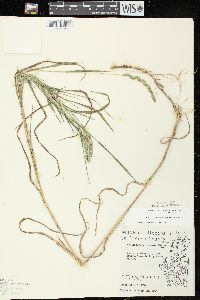
|
|
|
|
Family: Poaceae
Green Muhly, more...marsh muhly
[Agrostis racemosa Michx., moreCinna racemosa (Michx.) Kunth, Muhlenbergia glomerata var. ramosa Vasey, Muhlenbergia racemosa var. ramosa (Vasey) Vasey ex Beal, Polypogon racemosus (Michx.) Nutt., Vilfa racemosa (Michx.) P. Beauv.] |
Plants perennial; rhizomatous, not cespitose. Culms 30-110 cm tall, 1-1.5 mm thick, stiffly erect, much branched above the middle, internodes mostly smooth, polished, glabrous or puberulent immediately below the nodes, elliptic in cross section and strongly keeled. Sheaths scabridulous, slightly keeled; ligules 0.6-1.5(1.7) mm, membranous, truncate, lacerate-ciliolate; blades 2-17 cm long, 2-5 mm wide, flat, usually scabrous or scabridulous, occasionally smooth. Panicles 0.8-16 cm long, 0.3-1.8 cm wide, lobed, dense; branches 0.2-2.5 cm, appressed; pedicels absent or to 1 mm, strigose. Spikelets 3-8 mm. Glumes subequal, 3-8 mm (including the awns), about 1.3-2 times longer than the lemmas, smooth or scabridulous distally, 1-veined, acuminate and awned, awns to 5 mm; lemmas 2.2-3.8 mm, lanceolate, pilose on the calluses, lower 1/2 of the midveins, and margins, hairs to 1.2 mm, apices scabridulous, acuminate, unawned or awned, awns to 1 mm; paleas 2.2-3.8(4.5) mm, lanceolate, intercostal region loosely pilose on the lower 1/2, apices acuminate; anthers 0.4-0.8 mm, yellowish. Caryopses (1.2)1.4-2.3 mm, fusiform, brown. 2n = 40. Muhlenbergia racemosa grows on rocky slopes, beside irrigation ditches, in seasonally wet meadows, on the margins of cultivated fields, railways and roadsides, in prairies, on sandstone outcrops, on stream banks, and in forest ecotones at elevations of 30-3400 m. It is most common in the north central United States, but can be found at scattered locations throughout the western United States, and extends into northern Mexico. Perennial rhizome-forming herb 30 cm - 1.26 m tall Leaves: with open, minutely rough, slightly longitudinally ridged sheaths and 0.6 - 1.7 mm long, flat-topped membranous ligules that are unevenly cut to hairy along the margins. The blades are 2 - 17 cm long, 2 - 5 mm wide, flat, and usually rough. Inflorescence: terminal, spike-like and branched (panicle), dense, 0.8 - 16 cm long, 0.3 - 1.8 cm wide, with appressed branches 0.2 - 2.5 cm long. Fruit: a brown, spindle-shaped caryopsis, 1.2 - 2.3 mm long. Culm: 30 cm - 1.1 m long, stiff and erect, highly branched above the middle, 1 - 1.5 mm wide, elliptic in cross section, strongly longitudinally ridged, the internodes hairless or minutely rough just below the nodes but usually smooth and shiny elsewhere. Spikelets: 3 - 8 mm long, stalkless or borne on appressed-hairy stalks to 1 mm long. Glumes: nearly equal, 3 - 8 mm long, single-veined, with a smooth or minutely rough and pointed tip ending in an awn to 5 mm long. Florets: with yellowish anthers 0.4 - 0.8 mm long. Lemma: 2.2 - 3.8 mm long, lance-shaped with minutely rough pointed tips sometimes ending in an awn to 1 mm long, three-veined, with soft hairs to 1.2 mm long on the lower half of the midveins and along the margins. Palea: 2.2 - 4.5 mm long, lance-shaped with a pointed tip, two-veined, and loosely soft-haired on the bottom half. Similar species: The following species also have shiny, mostly hairless culms. The glumes of Muhlenbergia schreberi are missing or minute, and those of Muhlenbergia x curtisetosa are unequal and sometimes awned. Muhlenbergia sobolifera is identified by its egg-shaped, sometimes awned glumes and erect to ascending culms that rarely branch. The narrow, 1.4 - 2 mm long, sometimes awned glumes of Muhlenbergia bushii are shorter than the lemmas, and the ligules are 0.2 - 0.6 mm long. Muhlenbergia frondosa has narrow, 2 - 4 mm long, sometimes awned glumes that are shorter than to slightly longer than the lemmas, 0.7 - 1.7 mm long ligules, and 1.6 - 1.9 mm long caryopses. Muhlenbergia glabrifloris has 1.5 - 3.5 mm long, sometimes awned glumes that are shorter than or slightly longer than the lemmas, 0.5 - 1.5 mm long ligules, and 1.2 - 1.4 mm caryposes. Flowering: September Habitat and ecology: Introduced from the western United States, this species grows on dry roadsides and along railroad right-of ways. Occurence in the Chicago region: non-native Etymology: Muhlenbergia is named after American botanist, Gotthilf Henry Ernest Muhlenberg (1753-1815). Racemosa means "having racemes or stalked flowers arranged on a single elongate axis." Author: The Morton Arboretum FNA 2003, Gould 1980 Common Name: marsh muhly Duration: Perennial Nativity: Native Lifeform: Graminoid General: Perennial from scaly, creeping rhizomes, stems 30-110 cm tall, 1-1.5 mm thick, stiffly erect to somewhat lax, much branched above the middle, internodes smooth, puberulent immediately below nodes, elliptic in cross section and strongly keeled, sheaths slightly so. Vegetative: Blades 2-17 cm long, 2-5 mm wide, scabrous or minutely roughened, flat or loosely involute on drying, ligule 0.5-1.5 mm, membranous, truncate, lacerate-ciliolate. Inflorescence: Narrow racemose panicle 0.5-16 cm long, 0.5-2 cm wide, dense, green and bristly in appearance, lobed, with branches 0.2-2.5 cm, appressed and densely flowered with spikelets 3-8 mm; glumes subequal, 3-8 mm (including awns), about .3-2 times longer than lemmas, acuminate and awned with awns to 5 mm; lemma 2-4 mm, lanceolate, pilose on lower third to half with hairs less than 1 mm long, minutely roughened apices, acuminate, unawned or awned with awns to 1 mm. Ecology: Found on rocky slopes and in canyon bottoms, often in seasonally wet meadows from 6,000-11,000 ft (1829-3353 m); flowers July-September. Notes: The thicker, narrow spikelike panicle is similar to M. richardsonis but without the interruption. Key also with this species are the rhizomes. The nodes are interesting in that they are all bent. Ethnobotany: Unknown Etymology: Muhlenbergia is named for Gotthilf Heinrich Ernst Muhlenberg (1753-1815) a clergyman and botanist from Pennsylvania; racemosa means with flowers in racemes. Synonyms: Agrostis racemosa Editor: SBuckley, 2010 Much like no. 10 [Muhlenbergia glomerata (Willd.) Trin.]; culms becoming much branched from near the middle; internodes shining, glabrous or slightly puberulent near the top; ligule 0.6-1.5 mm, lacerate; infls 4-17.5 cm, terminal or on long leafy branches, the peduncle included or exsert to 10 cm; florets pilose only on the callus and sometimes the keels of the palea, but the margins and back of the lemma glabrous; anthers 0.6-0.8 mm; grain 1.4-2.3 mm; 2n=40. Drier habitats than no. 10; prairies, rock-outcrops, open upland woods, or sometimes along roads or in other disturbed sites; Wis. and Ill. to Alta. and e. Wash., s. to Okla. and Ariz. Hybridizes with no. 10. Gleason, Henry A. & Cronquist, Arthur J. 1991. Manual of vascular plants of northeastern United States and adjacent Canada. lxxv + 910 pp. ©The New York Botanical Garden. All rights reserved. Used by permission. From Flora of Indiana (1940) by Charles C. Deam This is an infrequent grass of the lake area. It is found in marshes and springy places. Our plants south of the lake area are from springy places. …… Indiana Coefficient of Conservatism: C = null, non-native Wetland Indicator Status: FACW |

